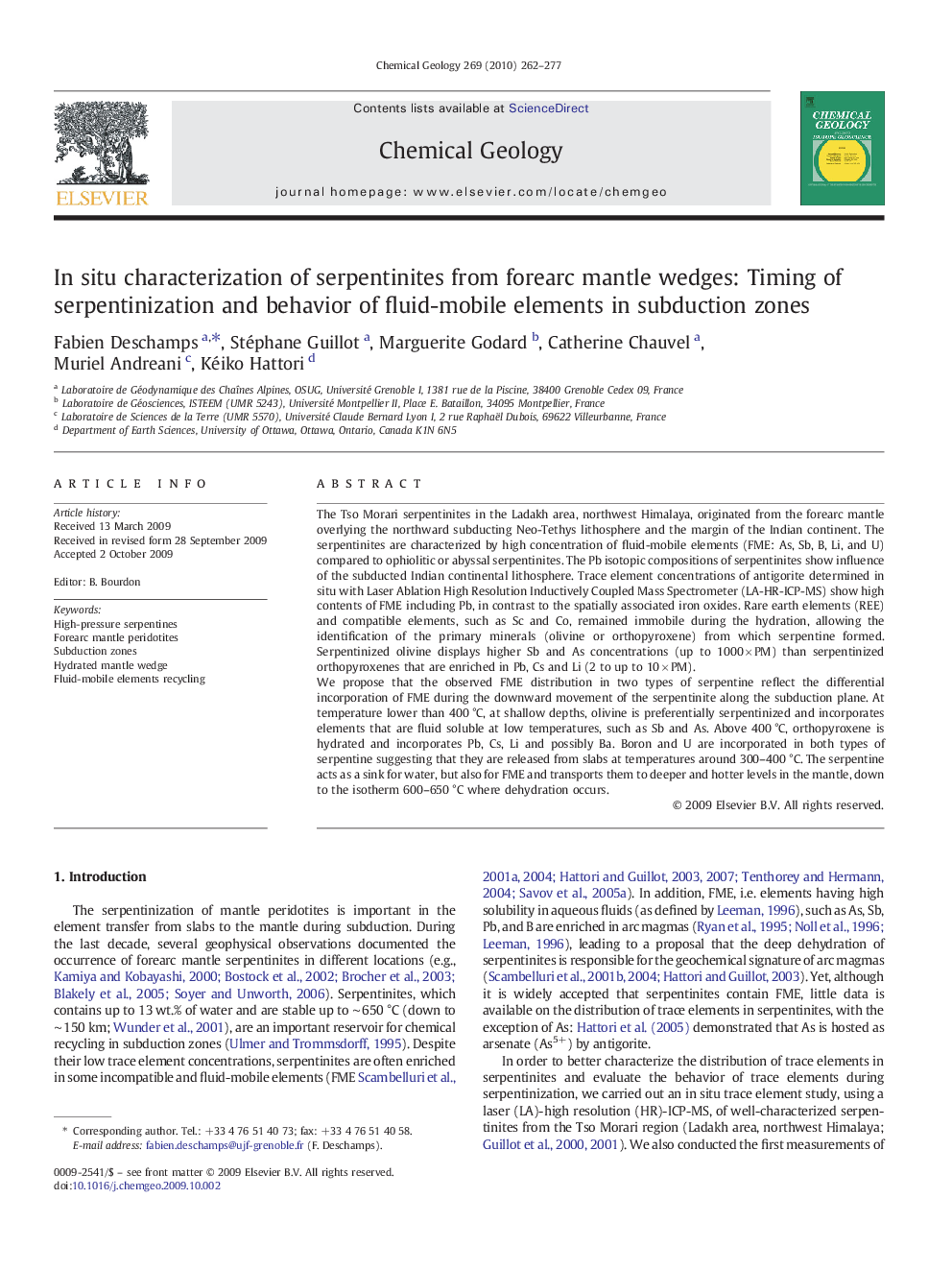| Article ID | Journal | Published Year | Pages | File Type |
|---|---|---|---|---|
| 4700170 | Chemical Geology | 2010 | 16 Pages |
The Tso Morari serpentinites in the Ladakh area, northwest Himalaya, originated from the forearc mantle overlying the northward subducting Neo-Tethys lithosphere and the margin of the Indian continent. The serpentinites are characterized by high concentration of fluid-mobile elements (FME: As, Sb, B, Li, and U) compared to ophiolitic or abyssal serpentinites. The Pb isotopic compositions of serpentinites show influence of the subducted Indian continental lithosphere. Trace element concentrations of antigorite determined in situ with Laser Ablation High Resolution Inductively Coupled Mass Spectrometer (LA-HR-ICP-MS) show high contents of FME including Pb, in contrast to the spatially associated iron oxides. Rare earth elements (REE) and compatible elements, such as Sc and Co, remained immobile during the hydration, allowing the identification of the primary minerals (olivine or orthopyroxene) from which serpentine formed. Serpentinized olivine displays higher Sb and As concentrations (up to 1000 × PM) than serpentinized orthopyroxenes that are enriched in Pb, Cs and Li (2 to up to 10 × PM).We propose that the observed FME distribution in two types of serpentine reflect the differential incorporation of FME during the downward movement of the serpentinite along the subduction plane. At temperature lower than 400 °C, at shallow depths, olivine is preferentially serpentinized and incorporates elements that are fluid soluble at low temperatures, such as Sb and As. Above 400 °C, orthopyroxene is hydrated and incorporates Pb, Cs, Li and possibly Ba. Boron and U are incorporated in both types of serpentine suggesting that they are released from slabs at temperatures around 300–400 °C. The serpentine acts as a sink for water, but also for FME and transports them to deeper and hotter levels in the mantle, down to the isotherm 600–650 °C where dehydration occurs.
